
views
Preparing the Body

Make sure the body is face up. If the body is front-side down, gravity will pull the blood down to the lowest parts of the body, particularly the face. This can discolor and bloat the facial features, making it more difficult to create a life-like appearance for the viewing.

Remove any clothing that the person is wearing. You will need to see the skin for signs that embalming is working, so the body will remain uncovered throughout the procedure. Also remove any IV needles or catheters that are in place. Typically, you'll need to catalog any property found on the person, as well as any cuts, bruises, or other discolorations at this time on your embalming report. This will also be used to document the procedure and chemicals used in the process. The report acts as insurance if the family chooses to sue the funeral home for any reason. Respect the body at all times. Use a sheet or towel to cover the genitals, and don't leave tools laying around on it while you're working. Assume the family may pop in at any moment.

Disinfect the mouth, eyes, nose, and other body openings. Wash the entire body with a germicidal soap or detergent. Spray a powerful disinfectant to clean bodily openings, open wounds, and other necessary surfaces. Inspect the deceased in regards to the type of fluid you will need. Some embalmers will use this opportunity to mix all the fluid they'll need for the procedure to get it ready. Usually, 16 ounces of fluid with 2 gallons (7.6 L) of water is a good dilution.

Shave the body. Typically, the face and body are shaved at this point. Men, women, and children are shaved to improve the look of the makeup. However, if the person had facial hair, the hair stays.

Relieve rigor mortis by massaging the body. Massage the major muscle groups to relieve the tension and move stiff joints to loosen them up. Even though rigor mortis goes away naturally, massaging the body helps to postpone it or move the process along.
Setting the Features

Close the eyes. Use great care in setting the eyes. Place an eye cap on each eye to set the eyelids in place. Eyelids are never sewn shut but may be glued shut in some cases. The features need to be set before the embalming fluid is introduced, because that fluid will "set" the body fairly rigidly, making it difficult to do it afterward.

Close the mouth and set it naturally. One of two methods is typically used to set the mouth: Sometimes, the mouth is sewn shut using mandible suture. Pass a curved needle through the jaw under the gums and back up through the septum. Place dentures, a mouth former, or cotton inside to help shape the mouth. Tie the string into a bow. A needle injector is also commonly used in conjunction with a mouth form. Like a mouthguard or a dental prosthetic, the mouth form holds the jaw together to create a natural bite and alignment of the jaw. This method often includes less room for human error.
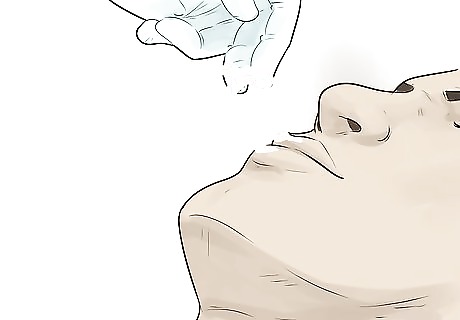
Moisturize the features. Apply a small amount of massage cream to the face and hands to keep the skin soft and pliable.
Embalming the Arteries
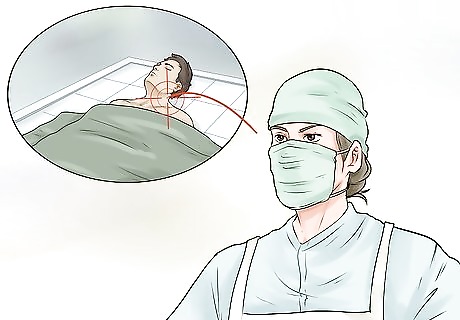
Find the carotid or femoral artery. The arteries are embalmed by simultaneously introducing embalming fluid (a mixture of formaldehyde, other chemicals, and water) into the carotid or femoral artery while draining the blood from a nearby vein or from the heart. It takes about two gallons of fluid to embalm a typical body.
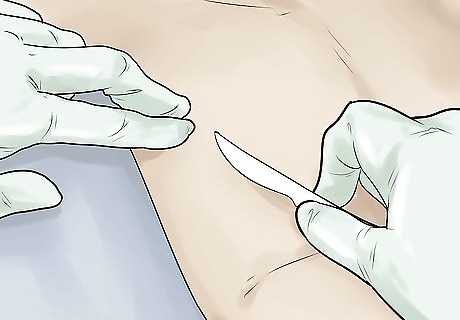
Make your incision. Clean the vein point off, create an entrance point, and insert the drain tube towards the heart. Tie a ligature around the lower side of the tube. Do the same for the artery except insert the cannula instead of a drain tube. Place the cannula forceps on the artery locking the cannula in place. Use the small locking forceps to clamp off the upper side of the artery and restrict the flow.

Turn on your embalming machine and distribute the fluid. While the embalming is taking place, wash the body with a good germicidal or antibacterial soap and be sure to check for drainage while massaging the limbs to push blood out and embalming solution in. When the fluid enters the arteries, pressure will build throughout the veins, which means the fluid is moving throughout the body. You'll notice the veins bulging somewhat. Open the jugular drain tube periodically to allow blood to escape and relieve the pressure.

Slowly decrease the pressure. Once the area is thoroughly embalmed, turn off the machine and reverse your arterial tube to the other side of the artery you chose to inject. This will embalm the part that was blocked by the arterial tube previously. Be sure to turn down the pressure, as the fluid only has to go a short distance. In the case of the femoral, this will embalm the lower leg. In the case of the right common carotid, this will embalm the right side of the head.
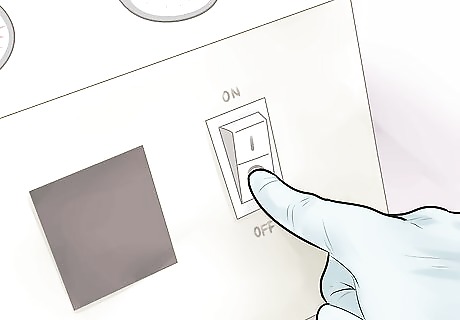
Finish. When you've embalmed to your satisfaction, or run out of fluid, turn off the machine, remove the cannula, and tie off the veins and arteries you used. Suture the incisions closed. Use sealing powder or putty to ensure there is no leakage.
Embalming the Cavity

Use a trocar to aspirate the organs. Now that the arteries have been embalmed, you need to suction any liquids or gasses inside the organs in a process called aspiration.

Aspirate the chest cavity. Insert the trocar 2 inches (5.1 cm) to the right and 2 inches (5.1 cm) superior to the umbilicus (belly button). Clean out the hollow organs in the abdomen such as the stomach, pancreas, and small intestine.
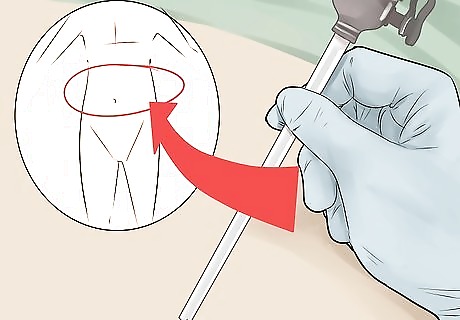
Aspirate the lower cavity. Remove the trocar, turn it around, and insert it into the lower body, aspirating the contents of the large intestine, bladder, and in the case of females, the uterus. The anus and vagina are sometimes packed with cotton to avoid seepage.
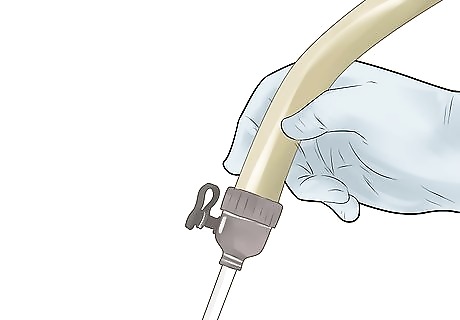
Inject cavity fluid into the torso. Attach a 16 ounce bottle of cavity fluid to the other end of the bottle injector. The gravity injection method is typically used to push the cavity fluid into the hollow organs, sterilizing and preserving them. Make sure you get both the upper and lower organs. This step is crucial in preventing "purge."

Remove the trocar and close the hole with a trocar screw. Clean out your trocar and put it away.
Casketing the Body
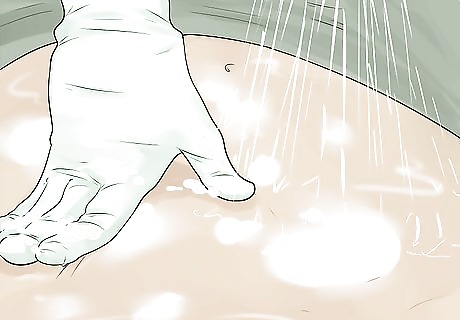
Wash the body thoroughly. Using the same disinfectant used earlier, clean the body thoroughly to remove any blood or other chemicals left behind by the embalming process. Use delicacy and care in this process.

Touch up the features. Lifelike makeup will be applied to the face and hands, the fingernails will be clipped, and the hair should be styled and groomed.

Dress the body. Generally, the deceased's family will choose the clothes to be worn in the casket. Dress the body carefully and appropriately. Sometimes plastic underwear is used to protect especially leaky bodies.

Place the body in the casket. Arrange the body peacefully. Consult the family for any advice or further instructions regarding the presentation.
















Comments
0 comment